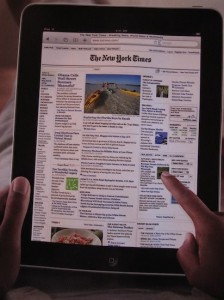Hmmm… I’m not entirely surprised by this Guardian report. I’ve noticed that teenagers of my acquaintance who have Kindles are definitely reading more. An interesting way-point on the journey to a new ecosystem.
Underlining the speed of change in the publishing industry, Amazon said that two years after introducing the Kindle, customers are now buying more ebooks than all hardcovers and paperbacks combined. According to unaudited figures released by the company on Monday, since the start of 2012, for every 100 hardback and paperback book sold on its site, customers downloaded 114 ebooks. Amazon said the figures included sales of printed books which did not have Kindle editions, but excluded free ebooks.
In a surprise move in May, the company went into partnership with the UK’s largest bricks-and-mortar books retailer, Waterstones.
Much to the consternation of the publishing industry, Amazon has refused to release audited figures for its digital book sales, something it does for printed books. It told the Guardian that the company would not discuss future policy on the matter.
The company said its figures also showed that British Kindle users were buying four times as many books as they were prior to owning a Kindle, a trend it described as a renaissance of reading.
“As soon as we started selling Kindles it became our bestselling product on Amazon.co.uk so there was a very quick adoption … [And they] are buying four times more books prior to owning a Kindle,” an Amazon spokeswoman said. “Generally there seems to be … a love of a reading and a renaissance as a result of Kindle being launched.”
So much for “the end of the book” complaint.


